|

|
|
| |
|
China Oil Painting Direct
|
|
100% hand painted, 100%
cotton canvas,
100% money back if not satisfaction.
|
|
|
|
ART WORKS
INDEX
A B C D E F G H I J K L M N O P Q R S T U V W X Y Z
|
|
ARTISTS
INDEX
A B C D E F G H I J K L M N O P Q R S T U V W X Y Z
|
|
|
|
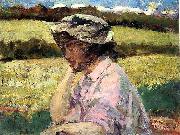 |
James Carroll Beckwith 
|
|
(September 23, 1852 - October 24, 1917) was an American landscape, portrait and genre painter whose Impressionist style led to his recognition in the late nineteenth century as a prominent figure in American art.
Carroll Beckwith, as he preferred to be known, was born in Hannibal, Missouri on 23 September 1852, the son of N. M. Beckwith, who was United States Commissioner-General at the Paris Exposition of 1867. However, he grew up in Chicago where his father started a wholesale grocery business. In 1868 aged 16 he studied art at the Chicago Academy of Design under Walter Shirlaw until the great fire of 1871 destroyed eveything (including much of the heart of the city). He then went to New York and studied at the National Academy of Design (of which he afterwards became a member) in New York City under Lemuel Wilmarth and later traveled on to Paris, staying there from November 1873 until 1878.
|
|
 |
James Charles 
|
|
English Painter, 1851-1906
|
|
|
|
James clarke hook,r.a 
|
|
1819-1907
English painter. He studied with the portrait painter John Jackson and entered the Royal Academy Schools, London, in 1836, winning medals for drawing and historical painting. His Academy d?but was in 1839 with The Hard Task (untraced). In 1844 Hook was awarded a gold medal in the Houses of Parliament competition. In 1846 he won a Royal Academy travelling scholarship, enabling him to spend two years in Italy, where he was strongly influenced by the colouring of the Venetian painters. On his return his work included a series of subjects from Venetian history, including The Rescue of the Brides of Venice
|
|
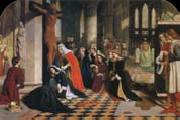 |
James Collinson 
|
|
English Pre-Raphaelite Painter, 1825-1881
English painter. He was the son of a Nottinghamshire bookseller. He studied at the Royal Academy Schools, London, where he was a fellow student of Dante Gabriel Rossetti and William Holman Hunt. Although quiet and unobtrusive, he caught the attention of critics when he exhibited the Charity Boy De but at the Royal Academy in 1847 (sold London, Christie, 26 Oct 1979, lot 256). The painting was praised for its truthfulness and use of minute detail. It was admired by Rossetti, who sought out Collinson and befriended him. The following year saw the formation of the Pre-Raphaelite Brotherhood (PRB), which Rossetti invited Collinson to join. Around this date Collinson renounced Catholicism and became engaged to Christina Rossetti; possibly this influenced the other members of the PRB in favour of his election to their number. However, he was never a leading member of the Brotherhood.
|
|
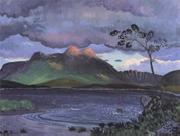 |
James Dickson Innes 
|
|
A British landscape painter who specialized in mountain scenes
Welsh Painter, 1887-1914
was a Welsh landscape painter who worked in both oils and water-colours. He was born in Llanelli, his father being a Scotsman who had found employment at the local tinplate works. He was educated at Christ College, Brecon, Carmarthen School of Art, and the Slade School of Art. He was a member of the Camden Town Group.[1] In 1911 he spent some time painting with Augustus John in North Wales, but much of his work was done overseas, mainly in France and Spain, foreign travel having been prescribed after he was diagnosed with tuberculosis.
|
|
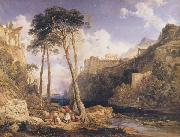 |
James Duffield Harding 
|
|
English Painter, ca.1797-1863
English painter, engraver and writer. He received his first lessons in painting from his father, J. Harding (d 1846), who was a pupil of Paul Sandby. By 1807 the family had moved to Greenwich where Harding spent much of his time drawing and painting in Greenwich Park. In 1811 at the age of 14 he exhibited for the first time at the Royal Academy. He had lessons in watercolour painting from Samuel Prout and in 1816 he won the Society of Arts silver medal for landscape painting.
|
|
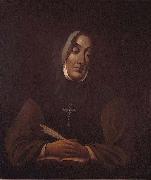 |
James Duncan 
|
|
painted Portrait of Mere Marguerite d'Youville in 1825-1881
|
|
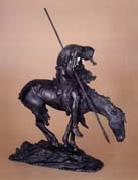 |
James Earle Fraser 
|
|
American Sculptor, 1876-1953,American sculptor, b. Winona, Minn., studied at the Art Institute of Chicago and in Paris. The best known of his many works are The End of the Trail (Visalia, Calif.), the designs for the Indian head nickel, and a statue of Alexander Hamilton
|
|
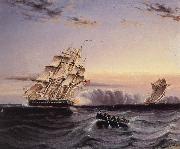 |
James Edward Buttersworth 
|
|
American Painter, 1817-1894
|
|
 |
James Ensor 
|
|
Belgian
1860-1949
Belgian painter, printmaker and draughtsman. No single label adequately describes the visionary work produced by Ensor between 1880 and 1900, his most productive period. His pictures from that time have both Symbolist and Realist aspects, and in spite of his dismissal of the Impressionists as superficial daubers he was profoundly concerned with the effects of light. His imagery and technical procedures anticipated the colouristic brilliance and violent impact of Fauvism and German Expressionism and the psychological fantasies of Surrealism. Ensor most memorable and influential work was almost exclusively produced before 1900, but he was largely unrecognized before the 1920s in his own country. His work was highly influential in Germany, however: Emil Nolde visited him in 1911, and was influenced by his use of masks; Paul Klee mentions him admiringly in his diaries; Erich Heckel came to see him in the middle of the war and painted his portrait (1930; Cologne, Wallraf-Richartz-Mus.); Alfred Kubin owned several of his prints, while Marc Chagall and George Grosz also adapted certain elements from Ensor. All the artists of the Cobra group saw him as a master. He influenced many Belgian artists including Leon Spilliaert, Rik Wouters, Constant Permeke, Frits van den Berghe, Paul Delvaux and Pierre Alechinsky.
|
|
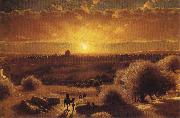 |
James Fairman 
|
|
American, 1826 - 1904
|
|
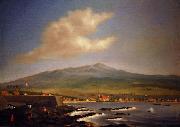 |
James Gay Sawkins 
|
|
(1806-1878) was an artist who was born in 1806 in Yeovil, Somerset, England. At the age of 14, he moved to Baltimore, Maryland with his family, where he made his living painting miniature portraits on ivory. He lived in Cuba from 1835 to 1845 and visited Hawaii from January, 1850 to June, 1852. After working in Australia, he returned to England in 1855. Sawkins died in 1878 in Turnham Green (near London), England.
The Honolulu Academy of Arts, Mission House Museum (Honolulu, Hawaii) and the National Library of Australia (Canberra) are among the public collections holding works by James Gay Sawkins.
|
|
 |
James Gibbs 
|
|
1682-1754
James Gibbs was born at Footdeesmire near Aberdeen, Scotland, in December 1682, the younger son of a Scottish gentleman. As a young man, he traveled on the Continent, pursuing his fondness for drawing. In Rome he determined to become an architect and entered the school of Carlo Fontana. Gibbs became acquainted with many members of the English aristocracy, for whom he made drawings and who were helpful to him in later life. He returned to England in 1709.
Through the influence of Edward Harley, Earl of Oxford, Gibbs was made one of the surveyors to the commissioners for building 50 new churches in London in 1713, and in this capacity he designed St. Mary-le-Strand (1714-1717), his first public building. Here he expressed not only influences of Sir Christopher Wren but also ideas absorbed from Italian baroque and mannerist architecture. Gibbs was employed by Lord Burlington in rebuilding the east block of Burlington House, Piccadilly, before that patron embraced Palladianism, but was superseded by the earl protege, Colen Campbell.
When the Whigs, who supported the Palladians, came to power, Gibbs as a Tory of baroque tendencies lost his official post in 1715, but his private practice among Tory patrons continued to be exclusive and remunerative. He built Cannons House, Middlesex (1716-1719; demolished 1747) for the Duke of Chandos; added a chapel and library at Wimpole Hall, Cambridgeshire (ca. 1720), for Lord Harley; built the exquisite Octagon Room at Twickenham, Middlesex (1720), with beautiful plasterwork by Italian stuccoworkers; and erected Ditchley House, Oxfordshire (1720-1725), probably his most splendid house, for the Earl of Lichfield, again with remarkable plasterwork by Italian craftsmen.
But public commissions were not entirely lacking. In 1720 Gibbs designed St. Martins-in-the-Fields (built 1722-1726), one of his outstandingly beautiful works. Like St. Mary-le-Strand and many of his houses, the interior was decorated with plasterwork by the fashionable Italian stuccoworkers, who probably came to England through his encouragement. St. Martins was followed by another building of extreme elegance and dignity, the Senate House at Cambridge (1722-1730), as well as the new buildings of King College. Many of the ornamental buildings in the park at Stowe House, Buckinghamshire, are his work, including the Temple of Diana (1726), the Temple of Friendship (1739), the Gothic Temple (1740), and the Column with a statue of Lord Cobham.
Gibbs general influence among architects and clients was great because of his exhaustive knowledge of architecture acquired through long study in Rome, an experience rare among architects of that generation, although later more common. This influence he extended by means of his Book of Architecture (1728), a record of both his executed and unexecuted work, and especially his Rules for Drawing the Several Parts of Architecture (1732), a work used by countless architects, students, scholars, and builders up to the present day.
Of Gibbs later works the circular Radcliffe Library at Oxford (1737-1749) is his most ambitious and monumental achievement; it shows much influence of Nicholas Hawksmoor. Gibbs published the designs in the large folio volume Bibliotheca Radcliviana in 1747, and he received from the university the honorary degree of master of arts. He designed the new decorations of Ragley Hall, Warwickshire (ca. 1750-1755), in the rococo taste then becoming fashionable. A distinguished late work is the church of St. Nicholas at Aberdeen (1751-1755). In his last years Gibbs held the sinecure post of architect to the Office of Ordnance. He died in London on Aug. 5, 1754.
In his early buildings, especially in his churches, Gibbs displayed that discreet form of the baroque which he had absorbed from Carlo Fontana in Rome and also from Wren example. Characteristic features of his work are window architraves interrupted by prominent rustication blocks, oeil de boeuf (oxeye) windows, boldly projecting cornices, and parapets topped by urns. In his later buildings the exterior form conformed more closely to severe Palladian principles, but the interiors retained a baroque exuberance.
|
|
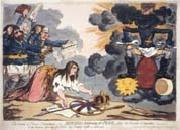 |
James Gillray 
|
|
English Illustrator, 1757-1815
English caricaturist and illustrator. He was essentially self-trained although he studied at the Royal Academy and on the Continent. His caricatures of the court of George III made him immensely popular. His masterly delineations, vigorous, clever, often subtle, sometimes vulgar and grotesque, numbered more than 12,000. Among his best-known cartoons are A New Way to Pay the National Debt (1796), Social Elements in Skating (1805),
|
|
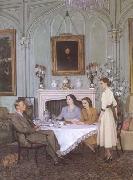 |
James Gunn 
|
|
1753 - 1801
|
|
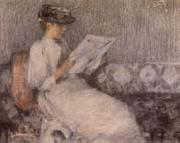 |
James Guthrie 
|
|
Scottish Painter, 1859-1930
Sir James Guthrie (June 10 1859?CSeptember 6 1930) was a Scottish painter known, later on in his career, for his portraiture, although primarily known for his work in the realm of Scottish Realism.
Born in Greenock, Guthrie, the son of a clergyman, originally enrolled at Glasgow University to study law, but abandoned this in favour of painting in 1877. Unlike many of his contemporaries he did not study in Paris, being mostly self-taught, although he was mentored for a short time by James Drummond in Glasgow and then John Pettie in London. He lived most of his life in the Scottish Borders, most notably in Cockburnspath, Berwickshire, where he painted some of his most important works, including A Hind Daughter (1883), and Schoolmates. He was strongly influenced by the French Realists, especially Jules Bastien-Lepage, and was associated with the Glasgow Boys.
He was elected an associate of the Royal Scottish Academy in 1888, and a full member in 1892. In 1902 he succeeded Sir George Reid as RSA president in 1902, and he was knighted the following year. He died in Rhu, Dunbartonshire in 1930
|
|
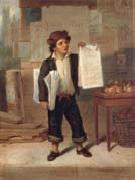 |
James H. Cafferty 
|
|
American, 1819-1869
|
|
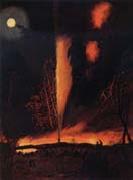 |
James Hamilton 
|
|
Irish-born American Painter, 1819-1878, American painter of Irish birth. He emigrated to the USA and at the age of 15 arrived in Philadelphia, where he was encouraged to study art by the engraver John Sartain (1808-97). Hamilton had drawing lessons with local teachers and studied from English artists' manuals including that on oil painting by Samuel Prout; he was also influenced by the English watercolour technique of broad transparent washes. With these stylistic interests and his innate sensitivity to nature,
|
|
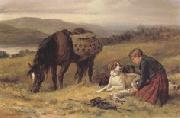 |
James hardy jnr. 
|
|
1801-1879
|
|
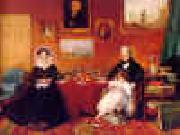 |
James Holland 
|
|
1799-1870
British
English painter. As a boy he was employed for seven years to paint flowers on pottery in the factory of John Davenport ( fl 1793; d 1848) of Longport. In 1819 Holland moved to London, where he continued at first to work as a pottery painter but also undertook watercolours of flowers and natural history subjects, exhibiting his works at the Royal Academy from 1824. After 1828 oil paintings predominated over watercolours in the many pictures that he exhibited at the Royal Academy, the Society of Painters in Water-Colours (of which he was made an associate in 1835), the British Institution and the Society of British Artists. He travelled to Paris in 1831 and subsequently made repeated tours of the Continent. Buildings in European cities now became his favourite subject, and above all, scenes of Venice, which he first visited in 1835; his Venetian views have sometimes been confused with those by Richard Parkes Bonington. In 1837 he was commissioned by the Landscape Annual to make drawings in Portugal, which were engraved in the issue for 1839. He travelled again to Venice in 1845, 1851 and 1857, making sketches en route of the Low Countries, France, Switzerland and Austria. Other subjects favoured by Holland were Blackheath and Greenwich (both London), where he lived from 1830 to 1845. He was renowned for his fluent draughtsmanship and for his brilliant colouring in both oils and watercolours, making liberal use of gouache in the latter. The contents of his studio were auctioned at Christie's, London, on 26 May 1870.
|
|
 |
James holland,r.w.s 
|
|
1799-1870
English painter. As a boy he was employed for seven years to paint flowers on pottery in the factory of John Davenport ( fl 1793; d 1848) of Longport. In 1819 Holland moved to London, where he continued at first to work as a pottery painter but also undertook watercolours of flowers and natural history subjects, exhibiting his works at the Royal Academy from 1824. After 1828 oil paintings predominated over watercolours in the many pictures that he exhibited at the Royal Academy, the Society of Painters in Water-Colours (of which he was made an associate in 1835), the British Institution and the Society of British Artists. He travelled to Paris in 1831 and subsequently made repeated tours of the Continent. Buildings in European cities now became his favourite subject, and above all, scenes of Venice, which he first visited in 1835; his Venetian views have sometimes been confused with those by Richard Parkes Bonington. In 1837 he was commissioned by the Landscape Annual to make drawings in Portugal, which were engraved in the issue for 1839. He travelled again to Venice in 1845, 1851 and 1857, making sketches en route of the Low Countries, France, Switzerland and Austria.
|
|
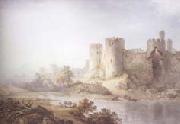 |
James Holworthy 
|
|
(d. 1841)
was a British watercolour artist. Some of Holworthy's art can be seen in the Tate Gallery. Holworthy exhibited at the Royal Academy in 1803 and 1804. In the latter year he was one of the foundation members of the Society of Painters in Water-colours, now known as the Royal Watercolour Society,and he contributed constantly to their exhibitions till 1813. His subjects being drawn from Wales, the Lake district, and Yorkshire. He practised in London till 1822. In 1900, there were two drawings by him at the South Kensington Museum. In 1821, Holworthy was living in Barton in the Beans, Leicestershire. In either 1821[2] or 1824 he married Anne Wright,[3] a niece of John Wright in Derby, and retired to the Brookfield estate, near Hathersage in Derbyshire, which he had purchased. He died in London in 1841
|
|
 |
James Hope 
|
|
American, born circa 1818-1892
|
|
 |
James Jacques Joseph Tissot 
|
|
(15 October 1836 -- 8 August 1902) was a French painter.
Tissot was born at Nantes. He studied at the École des Beaux-Arts in Paris under Ingres, Flandrin and Lamothe, and exhibited in the Paris Salon for the first time at the age of twenty-three. In 1861 he showed The Meeting of Faust and Marguerite, which was purchased by the state for the Luxembourg Gallery. His first characteristic period made him a painter of the charms of women. Demi-mondaine would be more accurate as a description of the series of studies which he called La Femme a Paris.
|
|
 |
James Jebusa Shannon 
|
|
(1862 - 1923), Anglo-American artist, was born in Auburn, New York, and at the age of eight was taken by his parents to Canada.
When he was sixteen, he went to England, where he studied at South Kensington, and after three years won the gold medal for figure painting. His portrait of the Hon. Horatia Stopford , one of the queen's maids of honour, attracted attention at the Royal Academy in 1881, and in 1887 his portrait of Henry Vigne in hunting costume was one of the successes of the exhibition, subsequently securing medals for the artist at Paris, Berlin, and Vienna.
He soon became one of the leading portrait painters in London. He was one of the first members of the New English Art Club, a founder member of the Royal Society of Portrait Painters and in 1897 was elected an associate of the Royal Academy, and RA in 1909. His picture, "The Flower Girl", was bought in 1901 for the National Gallery of British Art.
|
|
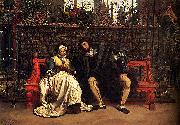 |
James Joseph Jacques Tissot 
|
|
James Jacques Joseph Tissot (15 October 1836 - 8 August 1902) was a French painter, who spent much of his career in Britain.
Tissot was born in Nantes, France. In about 1856, he began study at the École des Beaux-Arts in Paris under Hippolyte Flandrin and Lamothe, and became friendly with Edgar Degas and James Abbott McNeill Whistler. Tissot exhibited in the Paris Salon for the first time in 1859, two portraits of women and three scenes in medieval dress from Faust. The latter show the influence of the Belgian painter Henri Leys (Jan August Hendrik Leys), whom he had met in Antwerp in 1859. In the mid-1860s, however, Tissot began to concentrate on depicting women, often although not always shown in modern dress. Like contemporaries such as Alfred Stevens and Claude Monet, Tissot also explored japonisme, including Japanese objects and costumes in his pictures. A portrait of Tissot by Degas from these years (Metropolitan Museum of Art, New York) shows him with a Japanese screen hanging on the wall.
|
|
 |
James Latham 
|
|
James Latham (c. 1696 - 26 January 1747) was an Irish portrait painter.
James Latham was born in Thurles, County Tipperary, Ireland and possibly related to the family of Lathams of Meldrum and Ballysheehan. After some practice of his art, Latham studied for an academic year in Antwerp (1724 - 25) where he became a Master of the Guild of St Luke. He returned to Dublin by 1725, and may have visited England in the 1740s, as the influence of Joseph Highmore, as well as Charles Jervas and William Hogarth, is evident in his work of this period. Anthony Pasquin memorably dubbed Latham "Ireland's Van Dyck". Latham died in Dublin on 26 January 1747.
Several of James Latham's portraits are in the National Gallery of Ireland collection in Dublin; one is of the famous MP Charles Tottenham (1694-1758) of New Ross, Co. Wexford, "Tottenham in his Boots" (Cat. No.411) and a second is a portrait of Bishop Robert Clayton (1697-1758) and his wife Katherine.
|
|
 |
James Lynwood Palmer 
|
|
British artist , 1868 - 1941
|
|
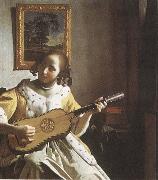 |
james m cain 
|
|
Born: 1 July 1892
Birthplace: Annapolis, Maryland
Died: 27 October 1977
Best Known As: Author of The Postman Always Rings Twice
|
|
 |
James Madison Alden 
|
|
1854-1860
|
|
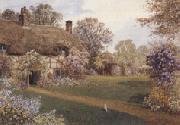 |
James matthews 
|
|
fl.1880-1920
|
|
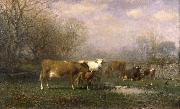 |
James McDougal Hart 
|
|
(May 10, 1828 - October 24, 1901), was a Scottish-born American landscape and cattle painter of the Hudson River School. His older brother, William Hart, was also a Hudson River School artist, and the two painted similar subjects.
Hart was born in Kilmarnock, Scotland, and was taken to America with his family in early youth. In Albany, New York he trained with a sign and carriage maker possibly the same employer that had taken on his brother in his early career. Unlike his brother, however, James returned to Europe for serious artistic training. He studied in Munich, and was a pupil of Friedrich Wilhelm Schirmer in Dusseldorf.
Hart returned to America in 1853. He exhibited his first work at the National Academy of Design in 1848, became an associate in 1857 and a full member in 1859. James Hart was particularly devoted to the National Academy, exhibiting there over a period of more than forty years, and serving as vice president late in his life from 1895 to 1899. Like his brother, James also exhibited at the Brooklyn Art Association (he lived for a time in Brooklyn) and at major exhibitions around the country.
Along with most of the major landscape artists of the time, Hart based his operations in New York City and adopted the style of the Hudson River School. While James Hart and his brother William often painted similar landscape subjects, James may have been more inclined to paint exceptionally large works. An example is The Old Homestead (1862), 42 x 68 inches, in the collection of the High Museum of Art in Atlanta, Georgia. James may have been exposed to large paintings while studying in D??sseldorf, a center of realist art pedagogy that also shaped the practices of Albert Bierstadt and Worthington Whittredge. William Hart, who did not seek academic European training, seems to have been more comfortable painting small and mid-sized works.
Like his brother William, James excelled at painting cattle. Kevin J. Avery writes, "the bovine subjects that once distinguished [his works] now seem the embodiment of Hart's artistic complacency." In contrast with the complacency of some of his cattle scenes, his major landscape paintings are considered important works of the Hudson River School.
|
|
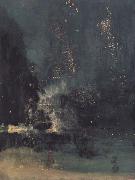 |
James Mcneill Whistler 
|
|
American Painter and Printmaker, 1834-1903
James Abbott McNeill Whistler's deft brushwork and mighty ego made him one of London's best-known painters in the second half of the 1800s. Born in Massachusetts, Whistler spent most of his adult life in England and France, in an era when an American artist in Europe was something of a rarity. He specialized in landscapes and (especially later in his career) portraits; stylistically he is often linked with Claude Monet and August Renoir, though he was not exactly part of the Impressionist movement. His etchings also are highly regarded. Witty, cranky and a bit of a devil, Whistler was a regular gadabout in British society. He had a famous long-running feud with the playwright Oscar Wilde, each of them trying to outwit the other with cutting public remarks. Some critics of the era considered Whistler's work to be smudgy and too radical; after viewing Whistler's 1875 study of fireworks over the Thames, Nocturne in Black and Gold: the Falling Rocket, John Ruskin wrote: "I have seen, and heard, much of cockney impudence before now; but never expected to hear a coxcomb ask two hundred guineas for flinging a pot of paint in the public's face." Whistler successfully sued Ruskin for libel but was awarded only a farthing in damages,
|
|
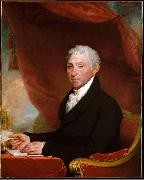 |
James Monroe 
|
|
(April 28, 1758 - July 4, 1831) was the fifth President of the United States (1817-1825). Monroe was the last president who was a Founding Father of the United States, and the last president from the Virginia dynasty and the Republican Generation. His presidency was marked both by an "Era of Good Feelings" a period of relatively little partisastrife and later by the Panic of 1819 and a fierce national debate over the admission of the Missouri Territory. Monroe is most noted for his proclamation of the Monroe Doctrine in 1823, which stated that the United States would not tolerate further European intervention in the Americas.
Born in Westmoreland County, Virginia, Monroe fought in the American Revolutionary War. After studying law under Thomas Jefferson from 1780 to 1783, he served in the Continental Congress. As an anti-federalist delegate to the Virginia convention that considered ratification of the United States Constitution, Monroe opposed ratification, claiming it gave too much power to the central government. Nonetheless, Monroe took an active part in the new government and in 1790 he was elected to the Senate, where he joined the Jeffersonians. He gained experience as an executive as the Governor of Virginia and rose to national prominence when as a diplomat in France he helped negotiate the Louisiana Purchase in 1803.
During the War of 1812, Monroe held the critical roles of Secretary of State and the Secretary of War under President James Madison. Facing little opposition from the fractured Federalist Party, Monroe was easily elected president in 1816, winning over 80 percent of the electoral vote. As president, he sought to ease partisan tensions and embarked on a tour of the country. He was well received everywhere, as nationalism surged, partisan fury subsided and the "Era of Good Feelings" ensued. The Panic of 1819 struck and dispute over the admission of Missouri embroiled the country in 1820.
|
|
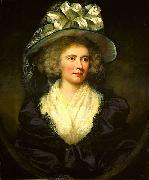 |
James Northcote 
|
|
RA (22 October 1746 - 13 July 1831), was an English painter
was born at Plymouth, and was apprenticed to his father, a poor watchmaker. In his spare time, he drew and painted. In 1769 he left his father and set up as a portrait painter. Four years later he went to London and was admitted as a pupil into the studio and house of Sir Joshua Reynolds. At the same time he attended the Royal Academy schools.
In 1775 he left Reynolds, and about two years later, having made some money by portrait painting back in Devon, he went to study in Italy. On his return to England, three years later, he revisited his native county, then settled in London, where John Opie and Henry Fuseli were his rivals. He was elected associate of the Academy in 1786, and full academician in the following spring. The "Young Princes murdered in the Tower," his first important work on a historical subject, dates from 1786, and it was followed by the "Burial of the Princes in the Tower". Both paintings, along with seven others, were intended for Boydell's Shakespeare Gallery. The "Death of Wat Tyler", now in the Guildhall, London, was exhibited in 1787; and shortly afterwards Northcote began a set of ten subjects, entitled "The Modest Girl and the Wanton", which were completed and engraved in 1796. Among the productions of Northcote's later years are the "Entombment" and the "Agony in the Garden," besides many portraits, and several animal subjects, such as "Leopards", "Dog and Heron", and "Lion".
|
|
 |
James Otto Lewis 
|
|
1799-1858
|
|
 |
James Peale 
|
|
1749-1831
James Peale Galleries
James Peale (1749 ?C May 24, 1831) was an American painter, best known for his miniature and still life paintings, and a younger brother of noted painter Charles Willson Peale.
Peale was born in Chestertown, Maryland, the second child, after Charles, of Charles Peale (1709?C1750) and Margaret Triggs (1709?C1791). His father died when he was an infant, and the family moved to Annapolis. In 1762 he began to serve apprenticeships there, first in a saddlery and later in a cabinetmaking shop. After his brother Charles returned from London in 1769, where he had studied with Benjamin West, Peale served as his assistant and learned how to paint.
Peale worked in his brother's studio until January 14, 1776, when he accepted a commission in the Continental Army as an ensign in William Smallwood's regiment. Within three months he was promoted to captain, and during the next three years fought in the battles of Long Island, White Plains, Trenton, Brandywine, Germantown, Princeton, and Monmouth. He resigned his army commission in 1779, and moved to Philadelphia to live with his brother. In 1782 he married, after which he established his own household and artistic career. (One notable later collaboration, however, was in 1788 to make floats for Philadelphia's Federal Procession in honor of the newly drafted United States Constitution.)
At the outset of his career Peale painted portraits and still-life, and by the mid-1780s had established his reputation. At about this time, however, Charles turned over his own miniature portrait practice to him, and throughout the 1790s and early 1800s Peale devoted himself to miniature painting. Much of this work was watercolor on ivory. In 1795 Peale exhibited a still life of fruit along with nine miniatures and his family portrait at the Columbianum, a short-lived art academy in Philadelphia. Around 1810, as Peale's eyesight began to weaken, he gave up painting miniatures to turn to large portraits and still-life subjects that were greatly admired and widely exhibited in Philadelphia, Boston, and Baltimore.
The total number of Peale's landscape paintings remains unknown, but he executed more than 200 watercolor miniatures on ivory, perhaps 100 still-life paintings, fewer than 70 oil portraits, and at least 8 history paintings.
Peale died in Philadelphia on May 24, 1831. Three of his six children became accomplished painters: Anna Claypoole Peale (1798?C1871), a miniaturist and still-life painter; Margaretta Angelica Peale (1795?C1882), painter of trompe l??oeil subjects and tabletop fruit; and Sarah Miriam Peale (1800?C1885), a portraitist and still-life painter.
|
|
 |
James Peele 
|
|
James Peale (1749 - May 24, 1831) was an American painter, best known for his miniature and still life paintings, and a younger brother of noted painter Charles Willson Peale.
Peale was born in Chestertown, Maryland, the second child, after Charles, of Charles Peale (1709 - 1750) and Margaret Triggs (1709 - 1791). His father died when he was an infant, and the family moved to Annapolis. In 1762 he began to serve apprenticeships there, first in a saddlery and later in a cabinetmaking shop. After his brother Charles returned from London in 1769, where he had studied with Benjamin West, Peale served as his assistant and learned how to paint.
Peale worked in his brother's studio until January 14, 1776, when he accepted a commission in the Continental Army as an ensign in William Smallwood's regiment. Within three months he was promoted to captain, and during the next three years fought in the battles of Long Island, White Plains, Trenton, Brandywine, Germantown, Princeton, and Monmouth. He resigned his army commission in 1779, and moved to Philadelphia to live with his brother. In 1782 he married, after which he established his own household and artistic career. (One notable later collaboration, however, was in 1788 to make floats for Philadelphia's Federal Procession in honor of the newly drafted United States Constitution.)
|
|
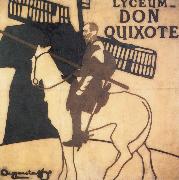 |
James Pryde and William Nicholson 
|
|
James Pryde (1866-1941) was a Scottish artist working mainly in graphics.William Nicholson is English Painter, 1872-1949
|
|
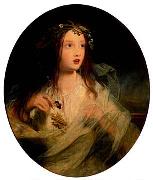 |
James Sant 
|
|
(1820-1916) was a British painter specializing in portraits, and a member of the Royal Academy. Sant was born in Croydon and taught by John Varley and Augustus Wall Callcott. He lived to the age of 96 and produced an astonishing number of canvases for exhibition at the Academy, some 250 of them, from 1840 through 1904. He was elected to the RA in 1870, and in 1872 Sant was appointed Principal Painter in Ordinary (official portraitist) to Queen Victoria and the royal family. Sant resigned from the RA in 1914 to "make room for younger men." His work can be found at the Tate Gallery.
His brother George Sant (1821 - 1877) was a landscape painter. His sister Sarah Sherwood Clarke (who married Frederick Clarke, Superintendent and later Secretary of the LWS Railway) was an artist of great talent, but all that remains of her work is a collection of 48 different views of Scotland from 1854; these were exhibited for the first time at the "Watercolours & Works on Paper Fair" in London in February 2010.
|
|
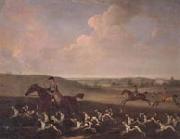 |
James Seymour 
|
|
British Painter , ca.1702-1752
English painter and draughtsman. The son of James Seymour (d 1739), a dealer in pictures and precious metals, Seymour was among the first English painters to specialize exclusively in sporting subject-matter. Though he possibly received some informal drawing instruction from the topographer Francis Place, Seymour was essentially a self-taught artist whose education was based on the study of pictures that passed through his father's hands; one of his earliest known works is a sketch of a horse's head after van Dyck (sold London, Christie's, 16 June 1970). His early 'genius to drawing of horses' was, according to George Vertue, compromised by 'modish extravagances' through living 'gay high and loosely' and because he 'never studied enough to paint or colour well'. Elsewhere, however, it was recorded that by 1739 he was 'reckoned the finest draughtsman in his way [of horses, hounds etc.] in the whole world' (Universal Spectator, 1739), and he was certainly preferred to his chief rival, John Wootton, by many sporting patrons. Among his employers was William Jolliffe MP, of Ammerdown. Though many of his paintings are either derivative of Wootton or simply inept, or both, others are characterized by a self-conscious stylistic naivety in which meticulous attention to detail and eerily static compositions combine to create curiously memorable images of some apparent sophistication.
|
|
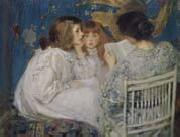 |
James Shannonc 
|
|
born in the United States and moved to England in 1878 where he trained at South Kensington
1862-1923
|
|
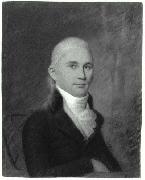 |
James Sharples 
|
|
(1751 or 1752 in Lancashire - 26 February 1811 in New York ) was an English portrait painter and pastelist, who moved to the United States in 1794. He first exhibited at the Royal Academy in 1779.
James was first intended for the Catholic priesthood, but became an artist instead.Sharples headed a family of successful portrait artists, including his third wife Ellen Sharples. He had four children, George by his first wife, Felix Thomas Sharples from his second marriage (c. 1786- after 1823), and James Sharples Jr.(c. 1788-1839) and daughter Rolinda Sharples (1793-1838) with this third wife, Ellen. Felix, James Jr. and Rolinda joined the family enterprise at ages 17, 15, and 13 respectively. Before marrying Ellen Wallace, James had been active in Bristol, Liverpool and Bath, where he taught drawing. Ellen was a lady of French extraction who had relations in America. The family left for the United States in 1796, but, according to Ellen's diaries, their ship fell into the hands of the French, and for seven months the family spent time in Brest, near Cherbourg. Landing in New York, James quickly became popular for his small portraits in pastel and his miniatures. From 1796 to 1801 he worked mainly in Philadelphia and New York, securing portrait commissions. The family traveled throughout New England region as itinerant portrait painters, looking for work and making inexpensive copies from the originals portraits they had made of popular and well-known figures, such as George Washington and James Madison.
|
|
 |
James Smetham 
|
|
1821-1889
was an English Pre-Raphaelite painter and engraver, a follower of Dante Gabriel Rossetti.[1] Smetham was born in Pateley Bridge, Yorkshire, and attended school in Leeds; he was originally apprenticed to an architect before deciding on an artistic career. He studied at the Royal Academy, beginning in 1843. His modest early success as a portrait painter was stifled by the development of photography (a problem shared by other artists of the time). In 1851 Smetham took a teaching position att the Wesleyan Normal College in Westminster; in 1854 he married Sarah Goble, a fellow teacher at the school. They would eventually have six children. Smetham worked in a range of genres, including religious and literary themes as well as portraiture; but he is perhaps best known as a landscape painter. His "landscapes have a visionary quality" reminiscent of the work of William Blake, John Linnell, and Samuel Palmer.[2] Out of a lifetime output of some 430 paintings and 50 etchings, woodcuts, and book illustrations, his 1856 painting The Dream is perhaps his best-known work. He was also an essayist and art critic; an article on Blake (in the form of a review of Alexander Gilchrist's Life of William Blake), which appeared in the January 1869 issue of the Quarterly Review,[3] influenced and advanced recognition of Blake's artistic importance. Other Smetham articles for the Review were "Religious Art in England" (1861), "The Life and Times of Sir Joshua Reynolds" (1866), and "Alexander Smith" (1868). He also wrote some poetry. Smetham was a devout Methodist, and after a mental breakdown in 1857, the second half of his life was marked by a growing religious mania and eventual insanity. "In one of his notebooks he attempted to illustrate every verse in the Bible."[4] (Smetham habitually created miniature, postage-stamp-sized pen-and-ink drawings, in a process he called "squaring." He produced thousands of these in his lifetime.) He suffered a final breakdown in 1877 and lived in seclusion until his death. Smetham's letters, posthumously published by his widow,[5] throw light upon Rossetti, John Ruskin, and other contemporaries, and have been praised for their literary and spiritual qualities.
|
|
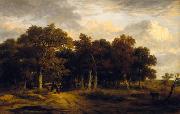 |
James Stark 
|
|
(November 19, 1794 - March 24, 1859) was an English landscape painter of the "Norwich School".Stark was born in Norwich, the youngest son of distinguished dyer Michael Stark (1748-1831, Scottish), and showed a talent for art from an early age. He was educated at the Grammar School where he was friends with John Berney Crome. He was then apprenticed for 3 years to John Berney's father, distinguished landscape artist John Crome, from 1811.
In that same years he exhibited work at the Norwich Society of Artists (being elected a member in 1812,) and his work "A view on King Street river, Norwich" was shown by the Royal Academy, London. In 1814 he moved to London, exhibiting at the British Institution between 1814-18, winning a prize of £50 in 1818. In 1817 he entered the Royal Academy as a student, and eventually began to receive commissions for his work.
Ill health forced Stark to return to Norwich after only 2 years study. There he devoted himself to painting the scenery around the city and executed a series of paintings of Norfolk rivers which were eventually engraved and published in 1834. In 1821 he married Elizabeth Younge Dinmore (d. 1834-35).
In 1830, he again settled in London, taking up residence in Chelsea, and exhibited at the British Institution, Royal Academy and Society of British Artists. In 1839, he moved to Windsor, painting many pictures of the scenery of the Thames, but moved back to London in 1849 in order to further his son's education in art.
Stark died at Mornington Place, Camden, London, in March 1859.
Stark's only son, Arthur James Stark (1831-1902), born in Chelsea, London, became a landscapes and animal painter. On a few of his father's pictures he was employed to draw the cattle.
|
|
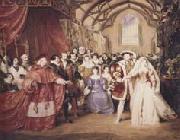 |
James Stephanoff 
|
|
(1789-1874).
|
|
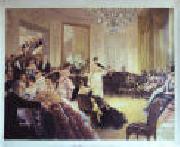 |
James Tissot 
|
|
French Painter, 1836-1902
French painter, printmaker and enamellist. He grew up in a port, an experience reflected in his later paintings set on board ship. He moved to Paris c. 1856 and became a pupil of Louis Lamothe and Hippolyte Flandrin. He made his Salon d?but in 1859 and continued to exhibit there successfully until he went to London in 1871. His early paintings exemplify Romantic obsessions with the Middle Ages, while works such as the Meeting of Faust and Marguerite (exh. Salon 1861; Paris. Mus. d'Orsay) and Marguerite at the Ramparts (1861; untraced, see Wentworth, 1984, pl. 8) show the influence of the Belgian painter Baron Henri Leys. In the mid-1860s Tissot abandoned these tendencies in favour of contemporary subjects, sometimes with a humorous intent, as in Two Sisters (exh. Salon 1864; Paris, Louvre) and Beating the Retreat in the Tuileries Gardens (exh. Salon 1868; priv. col., see Wentworth, 1984, pl. 45). The painting Young Ladies Looking at Japanese Objects (exh. Salon 1869; priv. col., see Wentworth, 1984, pl. 59) testifies to his interest in things Oriental, and Picnic (exh. Salon 1869; priv. col., see 1984 exh. cat., fig. 27), in which he delved into the period of the Directoire, is perhaps influenced by the Goncourt brothers. Tissot re-created the atmosphere of the 1790s by dressing his characters in historical costume.
|
|
 |
James Walker 
|
|
American, 1819-1889
|
|
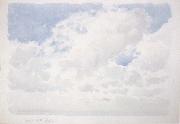 |
James Walter Robert Linton 
|
|
water-colourist ,English. 1869-1947
Australian silversmith, jeweller, woodworker and painter of English birth. His father was the watercolourist Sir James Dromgole Linton (1840-1916). Having trained as a painter and architect in London, he travelled to Western Australia in 1896 and began practising metalwork after settling in Perth; he was appointed head of the art department of Perth Technical School in 1902. Following a trip to London in 1907, when he attended classes at the Sir John Cass Technical Institute under Harold Stabler, he concentrated on producing metalwork. Working in partnership with Arthur Cross, William Andrews and his own son Jamie Linton (1904-80), he produced ecclesiastical and domestic wares, presentation pieces and jewellery. His designs were influenced by British Arts and Crafts metalwork and were bold and simple, with decoration generally confined to hammered surfaces, twisted wire, hardstones and enamels.
|
|
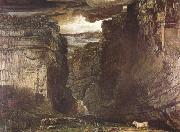 |
James Ward 
|
|
English Romantic Painter, 1769-1859
English painter and engraver. He was the most important animal painter of his generation. Many of his dynamic compositions depict horses, dogs or wild animals in agitated emotional states, the sense of movement being reinforced by vigorous brushwork and strong colours. With their sweeping landscapes and dramatic skies, his canvases epitomize Romanticism. Not content to excel merely as an animal painter, Ward also produced portraits, landscapes and genre and history paintings of varying quality.
|
|
|
|
|
|
|
|
|
| Wholesale China Oil Painting Wholesale Oil Painting China Xiamen Portrait Reproduction on canvas Chinese Oil Painting Wholesale USA Oil Painting |
|
|
|
|